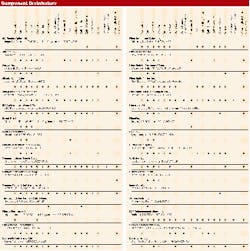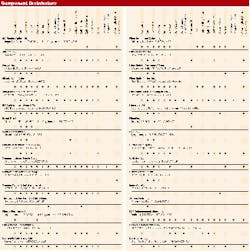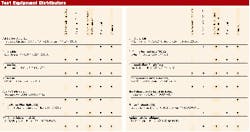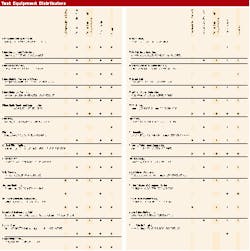Today's distributors must have service-provider mentality
BY MEGHAN FULLER
Convergence in the telecommunications market has telephone companies, private data-communications providers, and cable-TV providers scrambling to deploy new and better services to their customers as quickly as possible. As a result, they have begun to rely heavily on their distributors for quality products, technical and product support, competitive prices, fast and efficient delivery, even customized OEM solutions. Today's distributors will do everything, it seems, but your dry cleaning. But can they really be everything to everyone?
Companies use distributors for one basic reason: economics. Distributors have the buying power. "Say I need 100 of something, and that will cost me $1,000. If I was going to buy 1,000 of them, maybe it would only cost me $500," explains Stephen Montgomery, president of market-research firm ElectroniCast (San Mateo, CA). "But I don't need 1,000. I only need 100, and that's the problem." Companies then go through a distributor, who has 10 or 15 other customers, each of whom need a small quantity of a particular product. The distributor consolidates the orders and receives a discount for buying in bulk, which the distributor then passes along to the customers.
Items typically sold through distributors include cables, connectors, patch panels, patch-cord assemblies, cable assemblies, and fiber-optic installation equipment-items most needed by telephone and cable-TV companies. Huge telecommunications companies typically bypass the distributor and deal with the manufacturer directly. Distributors serve the guy who needs a small spool of cable to install the fiber backbone in your building, and he'll go to the distributor who provides the best service to get it.
Given the intense competition in the marketplace, today's distributors must go out of their way to cater to and satisfy customer demands. "We supply end-to-end solutions to our customers," explains David Owens, vice president and general manager of the public networks division of Sprint North Supply (New Century, KS). "Our services include pick, pack, and ship; materials-management services; assemble, wire, and test capabilities; engineer, furnish, and install capabilities; custom design and configurations; kitting; and e-business capabilities."
Customers are more likely to buy from distributors that demonstrate a thorough knowledge of the products in their inventory. To that end, many distributors, including Fiber Instrument Sales Inc. (Oriskany, NY), participate in intense training sessions offered by vendors. The distributor then provides training and classes for its customers.
Distributors must also strive to remain valuable in the eyes of the vendors whose products they carry. Explains Neal Weiss, president of Fiber Optic Center Inc. (Bedford, MA), "We try to offer the entire line of products from each vendor, as opposed to 'cherry-picking' the biggest selling and most popular part numbers." While other distributors may stock the same product from several different manufacturers, Weiss likens his company's role to that of a sales representative. Vendors also look to distributors to serve as market analysts, determining which products and technologies are hot and which ones are not."We hear things about shopping online and automated systems," says Speer, "but you just can't be a credit-card house and try to sell some of these products. Customer service is still a necessity, to give people the answers they don't have."
Owens agrees. "We must position ourselves as not only a distributor but as a service provider," he asserts.




